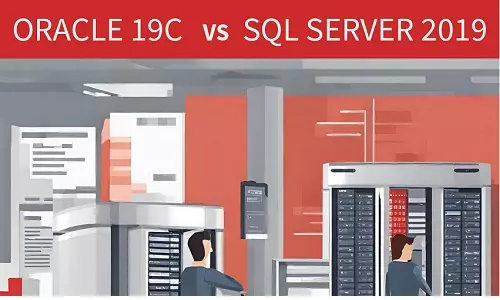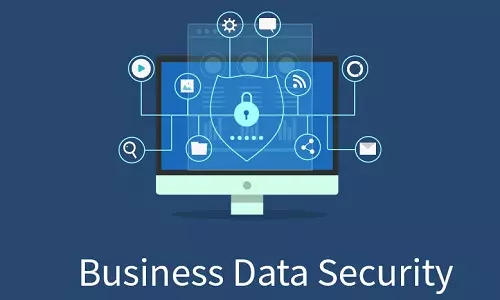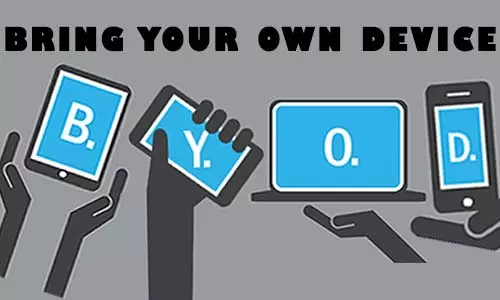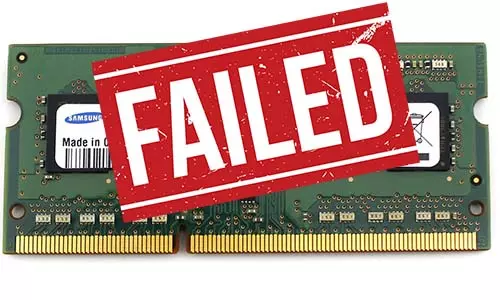The Impact of Mobile Technology on Society: Benefits and Concerns
Explore the future of mobile technology and how it's transforming healthcare, agriculture, location-based services, and manufacturing. Learn the applications of AI in mobile technology and the use of mobile augmented reality.
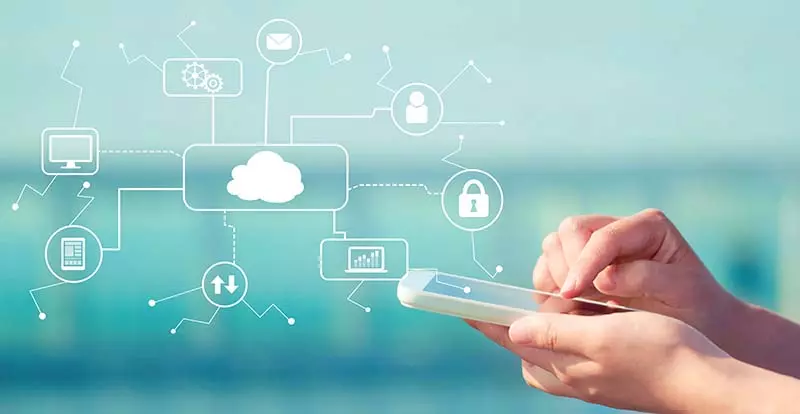
Image by Adobe Stock
Over the past ten years, information technology has played a significant role globally, constantly changing and evolving. According to data from Statista, by 2022, more than 60 percent of people worldwide were using mobile phones to connect to the internet, showing a major shift in how we communicate. Mobile technology, known for its convenience and flexibility, acts as a pathway for communication, sharing data, and connecting with others. In today's world, a mobile device comes with functions and capabilities comparable to a personal computer, highlighting its impressive progress.
The role of mobile phones has expanded beyond their initial use for calls and texts; now, they enable immersive internet experiences and find applications in diverse fields like healthcare, artificial intelligence, finding locations, education, transportation, and communication. Notably, mobile technology has seamlessly integrated into the larger idea of the Internet of Things (IoT), which aims to link various technological devices, ranging from household appliances to intricate sensors. The integration of mobile technology in different sectors has been recognized for making tasks smoother, ultimately leading to increased productivity.
Mobile Technology in Healthcare
The healthcare sector stands out as one of the primary beneficiaries of the robust and portable computational tools. In the past, healthcare predominantly relied on in-person consultations, necessitating patients' physical presence in examination rooms for diagnostic procedures. However, the landscape has evolved considerably, with health technology applications now embracing a patient-centric approach. This innovative design empowers patients to leverage mobile applications, thereby enabling remote diagnostics, treatment, and ongoing monitoring. The integration of mobile technology into healthcare has ushered in unprecedented opportunities to enhance patient engagement, curtail healthcare delivery expenses, facilitate the collection and analysis of crucial medical information, and ultimately elevate treatment outcomes.
Mobile technologies have made a significant impact on the healthcare field, and their potential becomes even more evident when combined with emerging technologies like wearable devices and small sensor-based systems. As mentioned earlier, patients can easily use health diagnostic apps to assess their well-being and get medical advice from doctors. Additionally, individuals can actively keep track of their health using wearable gadgets like smart wristbands, which continuously monitor factors such as weight, heart rate, glucose levels, and blood pressure in real-time. The gathered data is instantly sent to smartphones, where it's analyzed, and detailed reports are sent to both the user and their healthcare provider. This enables ongoing monitoring and assessment.
Mobile Technology and Geolocation
Geolocation involves using technologies like GPS and IP addresses to precisely locate and track a mobile device. These location-tracking tools have greatly enhanced what mobile devices can do. In a world where internet-connected mobile gadgets are widespread, people can keep tabs on where they are in real-time. The most common use of geolocation is for navigation. Apps like Google Maps, by Google LLC, make it easy for users to find their way in unfamiliar places. This navigation ability of geolocation has greatly improved how delivery companies operate. Amazon, for instance, uses mobile geolocation to smoothly move orders from its warehouses to customers' homes.
Furthermore, the introduction of mobile geolocation technology has driven the growth of ride-hailing services, with Uber as a prime example. With specially designed apps that use geolocation, users can request rides from anywhere using their mobile devices, which then alerts nearby drivers.
Geolocation technology has also transformed the way markets work. Location-based marketing lets businesses send notifications to people nearby, informing them about products and special offers. Additionally, users can explore nearby options by turning on GPS on their devices, linking them to goods and services close by.
Mobile Technology in Manufacturing
The manufacturing industry has experienced a significant transformation thanks to the integration of mobility. Smart technologies are quickly becoming part of manufacturing and industrial processes, leading to the automation of traditional methods. Various Internet of Things (IoT) innovations have found their place in manufacturing, marking the start of Industry 4.0 - the era of smart factories. Mobile technologies play a central role in Industry 4.0, as manufacturers adopt initiatives that introduce mobile innovations to their operations. Mobility is crucial for production managers working on the manufacturing floor. Mobile devices like phones, tablets, and handheld scanners are actively used to gather technical data for all operations. The adoption of mobile technology empowers manufacturing staff to access real-time data effortlessly for instant analysis and decision-making.
However, the impact of mobile technology isn't limited to the manufacturing floor. Users now have the ability to monitor real-time production data from virtually anywhere in the world. This accessibility has significantly improved response times for various stakeholders including suppliers, vendors, and customers. Mobile devices seamlessly connect with cloud technology, granting access to essential business applications and data repositories. For example, portable handheld scanners have become essential in warehousing and delivery companies, allowing customers to track their products throughout the delivery process. As soon as an item is scanned, its details are instantly updated on the cloud, giving customers the ability to accurately locate it in real-time. The merging of mobile technology and the capabilities of cloud computing has made real-time production and delivery data accessible to everyone, offering valuable insights to both business managers and end customers.
Mobile Technology in Agriculture
Global food security has risen to become one of the most pressing concerns, growing in importance with each passing day. The rapid advancement of technology has opened the door to extensive research and development, revealing how new technologies can be used to promote sustainability in agriculture. A key way mobile technology is making a difference in agriculture is by using internet-enabled devices to share valuable farming insights and expertise with farmers around the world. Mobile technology acts as a conduit for easy and efficient sharing of agricultural knowledge. This information covers a wide range of topics, including new farming methods, geographic information, data about pests and diseases, current weather conditions, and market prices. In the past, getting such information was limited to traditional media channels. However, the widespread use of mobile technology has freed both farmers and consumers, providing them with a comprehensive understanding of the agricultural landscape in a specific area.
Governments also benefit significantly from this technological shift. By carefully assessing and evaluating agricultural progress, governments can analyze their food security situation and create well-informed agricultural policies that benefit their citizens. The combination of mobile and cloud-based applications constantly provides real-time data about important agricultural factors, like weather conditions. This continuous flow of information is progressively arming farmers and other stakeholders with a set of tools ready to enhance agricultural production and guide smart land management decisions.
Mobile Technology and Artificial Intelligence
Artificial Intelligence (AI) technology is a dominant and rapidly evolving field in computing, catching the attention of major companies like Google and IBM, who have invested significantly in research and development. The merging of Artificial Intelligence with Machine Learning (ML) gives computers and mobile devices the ability to gather information, learn rules, and make predictions based on complex patterns. The marriage of AI and mobile technology offers a wide range of benefits to users, businesses, app developers, and governments. A clear example of AI's integration into mobile tech is in camera tools. Modern cameras can do more than recognize faces; they now create intricate collages featuring similar faces. Cameras can also identify objects and animals, highlighting the widespread use of AI.
AI is effectively breaking down language barriers. Language translation tech powered by AI promotes inclusivity in diverse communities. The combination of AI and mobile tech lets users translate written content from one language to another using their device's camera—a boon for travelers. Audio translation adds an auditory dimension to this linguistic transformation, especially in e-books where AI-generated audio allows for enriched consumption beyond traditional reading.
Mobile devices, especially smartphones, have seamlessly incorporated Virtual Assistance (VA) capabilities, enabling users to interact with voice-activated, AI-driven assistants. Amazon, Google, Microsoft, and Apple lead the way with products like Alexa, Google Assistant, Cortana, and Siri. These assistants use speech recognition to turn spoken words into programmable inputs, providing optimal outcomes in text or audio formats. Users can engage in comprehensive conversations, mirroring human-human interactions.
VA technologies go beyond convenience, reaching into scheduling, ordering, and booking appointments, rides, and flights. Amazon's Alexa, for example, navigates its online marketplace, handling orders, checkout, and payment. This integration empowers users with multiple avenues to streamline daily routines.
AI-powered chatbots bring a transformative change to human-system interactions, especially in assistance. Chatbots, computer programs, engage users in human-like conversations, automating tasks like business transactions and appointments. These chatbots, integrated with mobile interfaces, enable tasks from ordering food to arranging travel, tailored to user preferences. The fusion of chatbots with mobile tech signifies a paradigm shift, where convenience blends with intelligence to reshape daily interactions and transactions.
Mobile Augmented Reality
The intricate and impressive hardware technologies that form the foundation of mobile devices are the driving engine behind the rapid growth of mobile augmented reality. Augmented Reality (AR) refers to a technological concept where reality is skillfully altered and enhanced. Prominent mobile apps like Snapchat and Instagram utilize the power of mobile augmented reality to seamlessly incorporate face filter features into their user interfaces. Additionally, the realm of mobile gaming is increasingly embracing AR, adding extra layers to gameplay experiences. A standout example is the game Pokemon GO, which debuted in 2016. This game utilized AR to create a dynamic interaction between users and digitally placed objects, seamlessly blending them into real-world environments, from sidewalks to lush trees.
Industries ranging from tourism to construction are carefully exploring the potential of AR, aiming to open new avenues for exploration and creativity. An illustrative example takes the form of AR-driven mobile apps, allowing users to embark on journeys of self-discovery. Through these digital "looking glasses," users can assess how beauty products like hairstyles or makeup would look on them by overlaying virtual elements onto their actual appearance in real-time. This cutting-edge approach empowers users to explore various products, evaluating their compatibility and appeal before making informed choices. The combination of mobile augmented reality creates an engaging forum where digital innovation and tangible experiences seamlessly merge, fostering enriched exploration and self-expression.
Benefits of Emerging Mobile Technology and Tools
Inarguably, mobile technology has been propelled by the development of robust and versatile systems designed to support a wide range of applications. This changing landscape has brought about a significant shift, reshaping how humans interact with each other and with computing systems. The widespread presence of mobile devices has woven a fabric of communication and networking that transcends geographical barriers. A defining feature of this digital era is the rise of internet-driven applications, particularly social media platforms that enable remote interactions, promoting collaboration and engagement across vast distances.
The impact of mobile technology goes beyond communication. Both individuals and organizations are increasingly integrating mobile technology and wearable devices into their daily activities. This growing adoption leads to a massive surge in data generation, forming complex webs of information that underpin various domains. In the healthcare sector, health data becomes a valuable asset, capable of managing population health comprehensively and advancing research and development in treatments. Similarly, industry data plays a pivotal role in enhancing precision in production and distribution processes, ushering in a new era of efficiency and productivity in manufacturing.
Within this evolving landscape, there's an additional benefit in the realm of decision-making. Mobile technologies, combined with the capabilities of artificial intelligence, assume the role of decision-makers, alleviating cognitive burdens on users. This transformative automation spans various tasks, resulting in faster response times, improved efficiency, and seamless facilitation of production processes. Ultimately, the intricate interplay between mobile technology and artificial intelligence creates an era where productivity and innovation thrive in harmony.
Concerns of Emerging Mobile Technology and Tools
The rapid and dynamic evolution of mobile technologies has raised significant concerns among cybersecurity analysts. As people establish deeper connections between various aspects of their lives and mobile technology, the threat of security breaches and privacy violations becomes more pronounced. Mobile applications themselves can become potential pathways for security threats and privacy breaches unless they are built atop robust security models and principles.
Similar to an unsettling note in a musical composition, technophobia resonates strongly in discussions about data security and privacy. This growing narrative fuels a sense of unease as discussions around these crucial issues intensify, creating a shadow that forces individuals to confront the implications of a digital world marked by complexities and potential vulnerabilities.
The landscape changes even more as mobile technology takes on roles in critical decision-making, entrusting algorithms and automation to make choices that were once guided by human intuition. While this transformation represents innovation, it also contributes to a narrative where the core essence of human judgment is diminished—a contrast that warrants thoughtful consideration in the evolving relationship between humans and machines.
At the same time, human interactions undergo a noticeable shift, with traditional face-to-face relationships facing new challenges. With a surge in reliance on mobile technologies, especially social media, these digital channels play an increasingly central role in mediating interactions and fostering engagement. Yet, this redefined paradigm introduces a tangible disconnect, highlighting the delicate balance between convenience and detachment as individuals navigate between the tangible and the virtual realms.
Future Trends of Mobile Tools and Technologies
Modern technology presents a harmonious blend of small yet powerful components, driving a remarkable evolution. The journey of mobile devices reflects a constant improvement in processing power and memory capacity. Meanwhile, the realms of Virtual Reality (VR) and Augmented Reality (AR) are rapidly expanding, hinting at their integration into upcoming mobile technologies, promising users entirely new experiences. This fusion of domains holds the potential to add fresh dimensions to the world of mobile devices.
A similar current flows through networking, seen in the ongoing development of 5G/6G networks. This evolutionary progress creates an environment of seamless real-time data exchange and communication, weaving users and systems together. Mobile devices, positioned at the heart of this digital network, connect with the Internet of Things (IoT), enhancing their capabilities and expanding the scope of applications.
This era of innovation is built upon the foundation of hardware miniaturization and acceleration. Mobile devices transform into compact powerhouses, offering portability without sacrificing performance. This concept of condensed excellence drives versatility, enabling a multitude of applications and opportunities.
Similar to the crescendo in a symphony, human-system interactions are reaching new levels of simplicity and efficiency. The rapid pace of robust computing systems, combined with the universality of mobile cloud computing and the ongoing progress of artificial intelligence, come together in a harmonious symphony. In this fusion, we find interactions marked by seamless fluidity, allowing users to navigate interactions with unmatched ease.
In essence, the fabric of technology weaves together a diverse array of advancements, where small marvels combine to create a tapestry of innovation. With each step forward, the horizon of possibilities expands, revealing new vistas and propelling humanity toward an era filled with connectivity, cognition, and capability.


